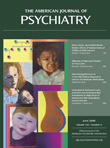Some 30 years ago, when I was beginning my psychiatric residency, Irvin Yalom, M.D., came to speak at a departmental grand rounds. I still remember a pithy comment from his presentation: “Psychotherapists tend to neglect the topic of death.” This comment had the ring of truth—the subject of death is far more difficult to discuss in therapy than sex, hatred, or money. Dr. Yalom has since spent much of his professional life redressing this neglect. In his group psychotherapy efforts with cancer patients, he found it impossible to avoid the specter of the Grim Reaper. In his classic text,
Existential Psychotherapy (1), he underscored the life-affirming value of looking death squarely in the eye. As Dr. Yalom gravitated toward fiction later in his career, themes of mortality and finiteness appeared in novels such as
When Nietzsche Wept (2) . In his most recent work of fiction,
The Schopenhauer Cure, the problem of living with the certainty of death is once again at center stage.
As the novel begins, psychiatrist and group therapist Julius Hertzfeld, a typical Yalom protagonist, is struggling with accepting the death sentence that accompanies his diagnosis of metastatic melanoma. With a year to live, he must decide how to spend his time in a way that makes him feel that he has not wasted his last moments on earth. He chooses to contact Philip Slate, a man he treated for sex addiction 23 years ago, with the ostensible aim of seeing how he is doing. His former patient explains to him that he was not helped by 3 years of individual psychotherapy with Dr. Hertzfeld, but he announces that he cured himself by studying the writings of Arthur Schopenhauer. He is now, in fact, a philosophical counselor who needs supervision, so Julius offers him supervisory experience if he will agree to be a patient in group therapy with him.
The conceit of the novel is that Julius learns about Schopenhauer at the same time that Philip masters the concept of human relatedness. In this arrangement, the author explores another of his favorite themes: mutuality and reciprocity in the psychotherapeutic relationship. How much of one’s self should one use as a psychotherapist? When does self-disclosure advance the process? When does disclosing too much personal detail burden the patient by disturbing the asymmetry of the psychotherapeutic contract?
Dr. Yalom ingeniously juxtaposes a chapter on Schopenhauer’s life between each chapter that advances the plot. The reader is thus allowed to gain some familiarity with an abstruse European philosopher in a relatively painless manner. We learn that Schopenhauer was a miserable, erratic, contemptuous, woman-hating, darkly pessimistic misanthrope who makes Samuel Beckett look like a Pollyanna. His solution to the fundamental existential dilemmas of the human condition was to eschew all attachments and to retreat into a schizoid withdrawal from life. Like Lacanian psychoanalysts today, Schopenhauer targeted the problems inherent in desire. He noted that when one obtains what the heart desires, the fulfillment does not bring the expected rewards along with it.
The group therapy sessions thus become a convenient narrative device in which the characters explore the dread of death, the pros and cons of Zen-like detachment from desire, the inevitable ambivalences associated with human relationships, and the ultimate futility inherent in a search for a satisfying solution. The intellectual discourse that emerges from these dialogues is stimulating and provocative and, alone, makes the book a worthwhile read. Dr. Yalom is less successful in constructing a narrative structure that can bear the weight of the ideas that he presents. At times, the developments within the plot seem more driven by the needs of his themes than by the psychological dimensions of the characters. Nevertheless, psychiatrists and psychotherapists will find much to ponder in this new Yalom contribution, and I heartily recommend it.

